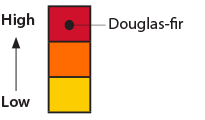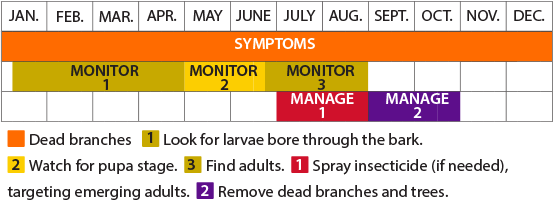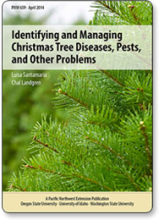Cylindrocopturus furnissi
- Larvae bore through the bark to the wood surface. At maturity, they tunnel deeper, into the pith.
- As needles die, they turn reddish-brown.
- Dead twigs and branches, due to feeding damage
- Deformation of branches and poor growth (seen in Douglas-fir seedlings)
- Dry sites with stressed trees
- Douglas-fir weakened by environmental stress or improper planting
- Phomopsis canker
- Bark beetles
- Drought
- Winter damage
- Scout for shoot dieback and feeding galleries on the surface of the wood.
- Look for 1.0 mm diameter adult weevil exit holes.
- Check on dead or dying twigs near the top of the tree.
- Target control, if needed, against emerging adults from July to August.
- Maintain vigorous growth by using proper cultural procedures.
- Remove and destroy infested trees.
- Avoid planting on dry sites.

- High susceptibility: Douglas-fir

- Look for dead branches: All year round
- Look for larvae bore through the bark: Mid-January through April
- Watch for pupa stage: May through June
- Find adults: July through August
- Spray insecticide (if needed), targeting emerging adults: July through August
- Remove dead branches and trees: September through October


